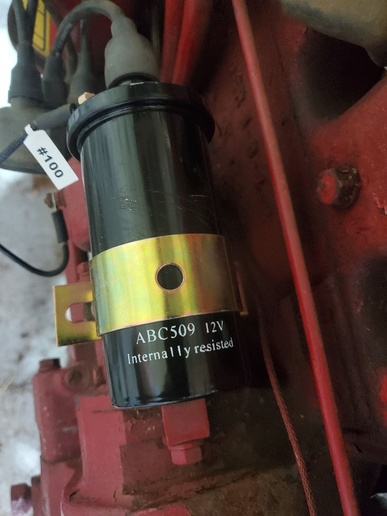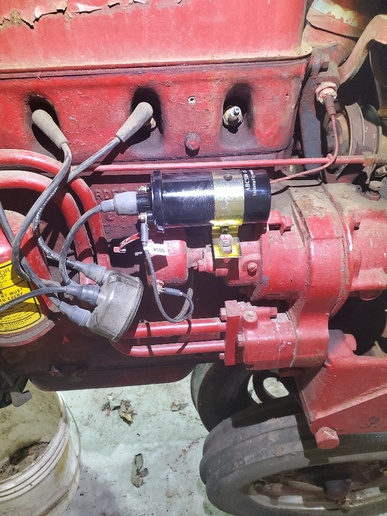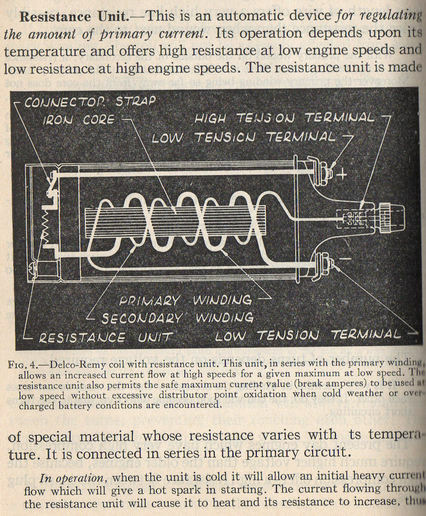Good morning Sir, you state But what is a resistor in many cases, but a coil of wire?
You are CORRECT I FWIW agree EXACTLY (may it be said great minds think alike ?? lol) they make in many
cases WIRE WOUND RESISTORS in addition to carbon or other material resistors. As we both know the
resistance in an old farm tractor ignition coil is derived primarily from the total resistance of all
those coils/windings of wire NOT wire PLUS an internal stand alone resistor ...... There are resistors
(wire wound or carbon) and there are inductors, and sort of step up type of transformers they create,
which are used to make an ignition coil.
Of course, as I'm sure you know, an ignition coil is primarily AN INDUCTOR AND TYPE OF TRANSFORMER its
the inductance and mutual inductance across the LV Primary and HV Secondary INDUCTORS (IE coils of wire)
that allow for the increased voltage from 12 plus to several thousand volts (when the points open and the
magnetic field collapses) necessary to arc jump current across the spark plug gap. A couple resistors
alone tucked inside the can wouldn't allow sufficient mutual inductance and transformer action to raise 12
plus volts to several thousand, that takes inductors/step up transformers ..
PS as Ive posted before (see picture) THEY DID INDEED MAKE COILS THAT CONTAINED A TYOE OF INTERNAL
RESISTOR TUCKED AWAY IN THE BOTTOM OF THE CAN (internally ballasted) but Ive NEVER EVER seen one used on
old farm tractors, have you or anyone here ??????????
PS2 Hey Im sure you know all this (not posted for your benefit) but hopefully we can help others...
Fun and a pleasure to sparky chat with you, I enjoy your comments. You have a nice day and G _ _ bless you
and yours
John T







